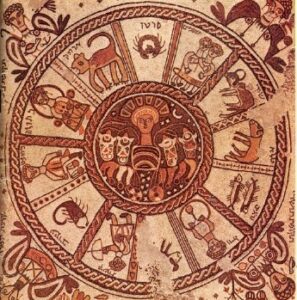 Although some people choose to read Tarot cards entirely by means of intuition, most of us begin by “learning” card meanings and associations. We may read and memorize material from a “little white book” or website. Or we may lean on one or more of the many systems of correspondences that have been developed to describe the cards.
Although some people choose to read Tarot cards entirely by means of intuition, most of us begin by “learning” card meanings and associations. We may read and memorize material from a “little white book” or website. Or we may lean on one or more of the many systems of correspondences that have been developed to describe the cards.
For instance, I think of the suit of Wands as corresponding to the spirit, or passion, or the meaning of one’s life and legacy. Cups are the suit of emotions and relationships. Swords are the mind, and Pentacles health or finances.
Numbers and Court Cards can each have a correspondence too. Ones are beginnings or seeds. Twos, partnerships or decisions. Threes community and creativity, etc.
So even without learning a traditional (or canned) meaning for a card, we can read the Two of Cups as a “decision of the heart” or similar.
Systems of correspondence range from the very basic (e.g., all fives mean “change”) to the excruciatingly dense and complex. As I have been delving in to the Thoth deck and learning about the teachings of the Golden Dawn, it’s been necessary to learn at least a little about a lot of systems – Kabbalah, astrology, alchemy and more.
It is certainly fascinating to study new things, and to explore new possibilities and layers of meaning in the cards. There is great temptation, however, to begin to think “this must be IT! At last I have found THE one, ultimate, indisputable, correct and complete way of understanding the Tarot, and, perhaps, THE UNIVERSE!”
In fact, within the Golden Dawn (and still to this day) heated arguments about which Hebrew letter or Zodiacal Sign corresponds with a particular Trump have been common. People get so much invested in being right about something that we miss the point of why we were trying to understand it in the first place.
Whether we are talking about the laws of physics, or the meaning of life, or the significance of little pieces of cardboard with odd images on them, any system of study or classification can only go so far. I suspect that this is particularly true when we’re talking about the little pieces of cardboard.
Can we take ancient India’s cosmology of the causal world, astral world and physical world and draw some comparisons to the four worlds of the Kabbalah, and the suits of the Tarot? Probably. Might this be useful? Sure, maybe.
There are limits though. There are limits to the value of such endeavors, and there should be limits to how much of a culture’s ideas we feel comfortable adapting before the alarms of disrespect and appropriation sound in our heads.
My own efforts to better understand my life, my psyche and my place in this world have prompted wider and wider explorations across many epochs and cultures. This has been fruitful and fun, and I believe that it is making me a better human being. But I also believe that it’s easy to get so deep in the weeds that we can no longer see the meadow.
Ultimately, when we shuffle the deck and deal, we bring the sum of our studies, experiences and intuition to bear in trying to decipher what (if any) relevance the cards may have. Slavish adherence to any system of correspondence, no matter how intriguing that system may seem, is a hindrance to this operation.
—————————–
Do you use a particular system of classification or correspondence when you read Tarot? I’d love to hear about your practices, and your thoughts.